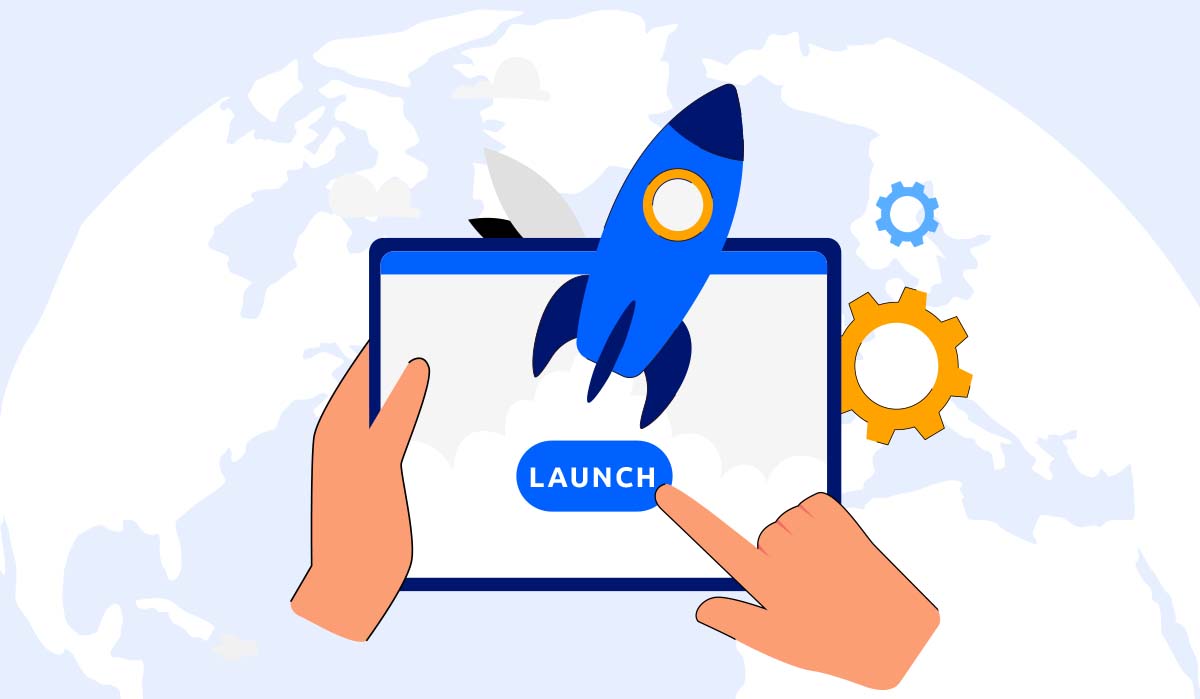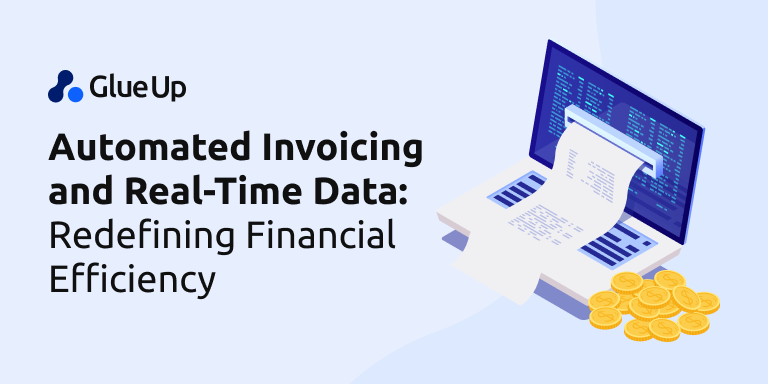![What is a Digital Transformation Roadmap and How to Build One for Your Multi Chapter Organization [16-Step Guide with Examples] What is a Digital Transformation Roadmap and How to Build One for Your Multi Chapter Organization [16-Step Guide with Examples]](/sites/default/files/2024-05/image_1_header_1536x768%20%289%29.webp)
Last Updated: May 17, 2024
According to the latest stats, the average spending on digital technologies has increased from $2 to $3 trillion globally, indicating the massive adoption of digital technology by businesses. This means that if you are not incorporating digitalization in your organization, you are going to lose ground in the next few years.
If you are a multi-chapter organization looking forward to transforming your processes digitally, this article is for you. We will guide you on how to build a digital transformation roadmap and implement each step effectively. Let’s get started.
Key Takeaways
- Digital transformation involves integrating technology into every aspect of a business to achieve a competitive advantage. It's essential for improving day-to-day operations and providing value to customers.
- A digital transformation roadmap outlines the steps needed to achieve digitalization goals. It addresses key questions such as the need for transformation, how to transform, required resources, timelines, and strategies to stay competitive.
- The roadmap includes three main aspects: Enhancing customer experience through technology, Leveraging data and analytics for insightful decision-making, and Streamlining operations with process automation.
- Engage employees as change ambassadors, set a fast transformation pace and share early wins, use software to support the roadmap, and equip your team with the right knowledge through online courses and continuous learning.
- Glue Up's AI-powered all-in-one association management software supports digital transformation by streamlining operations and enhancing member engagement. Using Glue Up can significantly enhance digital transformation efforts, making it a valuable tool for organizations.
What Is Digital Transformation?

Digital transformation involves integrating technology into every aspect of businesses to achieve a competitive advantage. It includes both replacing the existing traditional processes with digital solutions and adopting new technology to meet evolving business and market needs.
There are two main reasons why a business undergoes digital transformation. One, to improve the company's day-to-day operations, and Two, to provide value to its customers.
Digital transformation involves experimenting with new technology and rethinking how you approach everyday problems. Since a transformation is an evolution, there is no definitive endpoint. This means that a business should continue seeking digital solutions to improve itself.
This can be accomplished through ongoing upskilling, transferring your data to cloud-based digital transformation platforms, and implementing AI solutions that fit your business needs.
What is a Digital Transformation Roadmap?

Digitalization is a multi-step process that requires thorough planning and a solid strategy. Hence, a business transformation roadmap outlines the steps a business can take to achieve its digitalization goals.
Essentially, a roadmap for digital transformation must address the following questions:
- What is the need for digital transformation in my business?
- How can I transform my business digitally?
- What resources do I need to transform?
- What is the time frame to expect successful transformation?
- What digital transformation strategies do I need to stay ahead of my competitors in the future?
Digital Transformation Strategy Vs. Digital Transformation Roadmap
The difference between a digital transformation roadmap and a strategy is that the strategy is the bigger picture; it outlines the end result.
On the other hand, the roadmap provides a step-by-step guide, detailing what the next moves will be from there. The strategy sets the vision and goals, while the roadmap breaks down the journey into actionable steps to achieve those goals.
For example, let’s say a company’s digital transformation strategy is to become the leading provider of digital services in its industry within five years. This strategy includes broad objectives such as enhancing customer experience, increasing operational efficiency, and leveraging data analytics for better decision-making.
However, the strategy outlines the end goals and the desired state the company aims to achieve.
In contrast, the digital transformation roadmap for this strategy would include detailed steps and milestones to reach those objectives.
For instance, the roadmap might start with implementing a new customer relationship management (CRM) system in the first year, followed by integrating advanced data analytics tools in the second year and then automating key operational processes by the third year.
Each step in the roadmap would be clearly defined, with specific timelines, resources needed, and measurable outcomes.
Objectives to Build a Digital Transformation Roadmap

An effective roadmap is crucial for successful digitalization. It helps you identify the pain points in your organization, what can be done to overcome them, and what steps need to be taken.
A roadmap is especially helpful for organizations with multiple chapters since it helps bring all the chapter leaders together on what needs to be prioritized.
Additionally, it helps the parent organization coordinate with the chapters, provide feedback for improvement, and evaluate their performances. It also ensures an efficient and coordinated digitalization process, so that no chapter is left behind.
3 Aspects of Digital Roadmaps
A digital transformation roadmap can include many things, though it has 3 main aspects which are as follows:
1. Enhancing Customer Experience Through Technology
Statistics show that 74% of organizations consider digital transformation a top priority. Why is this the case? It's because every organization aspires to deliver an exceptional customer experience.
Enhancing customer experience is a fundamental aspect of digital innovation, and the roadmap for this journey includes detailed plans for achieving this through various digital initiatives.
Moreover, leveraging advanced technologies helps associations streamline operations, personalize interactions, and offer seamless services, ultimately promoting customer loyalty and long-term engagement.
2. Leveraging Data and Analytics for Insightful Decision-Making
Leveraging data analytics and making informed decisions is a crucial aspect of a digital transformation roadmap. Data analytics allows organizations to gather, process, and analyze vast amounts of information from various sources, providing valuable insights into customer behavior, market trends, and operational performance.
Utilizing these insights allows companies to make informed decisions that boost efficiency, drive innovation, and deliver stellar member experiences.
For example, data analytics can reveal customer preferences and purchasing patterns and enable businesses to personalize membership marketing strategies and product offerings.
Predictive analytics can also identify operational inefficiencies, leading to optimized processes and cost savings. Furthermore, it can forecast future trends and demands, allowing companies to adapt their strategies proactively.
3. Streamlining Operations With Process Automation
Streamlining operations with process automation is a key aspect of the digital transformation roadmap. Automation allows for the rapid execution of repetitive tasks, freeing up employees to focus on more strategic activities. It also ensures consistency and accuracy, reducing the risk of human error.
Besides, this process streamlining increases efficiency and reduces operational costs, which are critical components of digital transformation strategies.
A revealing statistic shows that 64% of organizations say they need to build new digital businesses to stay competitive in 2024 and beyond. This highlights the significant impact of digital transformation.
Process automation lets organizations streamline their operations and leverage new technologies to remain competitive in an increasingly digital marketplace. Overall, the digital transformation roadmap outlines these steps and marks that businesses can adapt and thrive in a fast-paced business environment.
How to Build a Digital Transformation Roadmap for Multi-chapter Organizations? Step by Step Guide
Digital transformation is not a one-step process. It is rather a series of stages that may take months or even years to complete. Having multiple chapters will also present additional challenges for effective coordination and fair distribution of funds.
These obstacles, however, can be overcome with the right planning and execution.
To ensure success, we have created this guide to assist you in creating a digital strategy roadmap for your organization. This roadmap is designed specifically for chapter-based organizations, keeping their objectives and challenges in mind.
Stage 1: Redefining Organizational Values

Organizational values are the guiding principles that provide purpose and direction to your chapters.
A digital transformation requires redefining your corporate values, enabling more innovation, digitization, and exploration within your multi-chapter organization. By reinforcing these values, you will reshape the culture of your chapters, find the right talent, and fulfill your mission.
To redefine corporate values, the parent and local chapters need to come together and take the following steps.
1. Identify Your Goals
Every guide starts with a result in mind. You can break your goals into short and long terms for easy tracking. Each chapter can have its own goals in addition to the common goals which will be aligned with the parent organization and other chapters).

Make sure your goals are SMART i.e. they must be Specific, Measurable, Achievable, Realistic, and Time-bound. You can add digital transformation goals for your chapters including business automation, cloud-based solutions, 5G, and IoT (Internet of Things).
2. Evaluate the Current State
Knowing where you stand on the timeline of achieving your goals can help you set goals for the future. It involves analyzing both the internal and external environment of your organization.
As long as your chapters have the same mission and procedures as the parent, you will only need one analysis. However, if your chapters are organized independently, working on different missions and possessing distinct operations, you will need to analyze each chapter as well.
During analysis, you will determine what processes in your organization are not technology-powered, where the void exists and how digitalization can supplement it. For example:
- Are you spending a lot of time on manual tasks, making it difficult to focus on your core missions?
- Do you feel that your data is insecure?
- Do you think that your chapters are not well-coordinated?
By narrowing down your pain points, you gain valuable insight into the elements that need improvement. To evaluate your company’s current situation, you can use the following two analysis methods:
SWOT: Also known as a situational assessment, SWOT analysis helps in identifying the current state of the business and its chapters, both internal and external. You can identify the Strengths, Weaknesses, Opportunities, and Strengths by reviewing the company against its competitors.
To create the IT transformation roadmap, this evaluation will take into account technological factors. For example, you might want to move from an analog to a cloud-based phone system to make reporting easier.
STEEP: This is a great external evaluation tool that helps to determine how factors such as social, technological, economic, environmental, and political factors are influencing your organization and its chapters. With STEEP analysis, you will identify the:
- Hindrances you can face while implementing digital transformation.
- Opportunities that can help you improve your digital capabilities.
Additionally, you will also have to assess your chapter’s culture, the level of the skills of the workforce in each one, and how current operations are being performed.
3. Establish Clear, Measurable Plans
Once you know your current state (where you are) and your goals (where you need to be), you can now create strategies to reach there. The implementation plans may include several points like revamping your infrastructure, investing in new technology, hiring people with tech backgrounds, or even investing in new skills.
Be sure to plan a roadmap that considers your technological abilities, budget, timeline, and human resources to ensure that your strategies are achievable. Additionally, maintain a systematic way of tracking your activities to know whether your efforts are working.
A digital transformation roadmap for your multi-tier organization may include goals like centralizing data from all chapters or giving your chapters complete autonomy. The best thing you can do here is to get a chapter management software that will sync all of your branches.
In this way, the chapters will be able to manage and create their websites, memberships, and operations independently, while the parent organization can view their activities and data through a dashboard.
Keep in mind that you may need to modify your roadmap based on your business's performance or the changing priorities of the digital landscape, so it should be adaptable.
4. Ensure Commitment From Senior Members
Digital transformation is a huge project, especially for large organizations with multiple chapters. This requires relentless contribution and persistence, especially from the chapter admins and other senior members.
Their strong commitment ensures disciplined operations and productive decisions. They act as leaders to drive the entire team, communicate the organizational vision and foster a culture of innovation.
It is evident that without a strong dedication from the executive members, digital transformation in an organization cannot be achieved.
5. Secure Funding
A business transformation is a costly investment requiring large funding. According to the latest report, the annual compound growth rate of digitalization is predicted to reach 16.5% by 2024.
Obtaining secure funding is essential to get a good ROI in the long run, even if the effects of digital transformation do not seem tangible in the short run.
You will need significant investment for acquiring new talents, buying new tools and software, upgrading your systems, and upskilling your workforce.
Once you secure the significant investments, you can fairly divide them among your chapters.
Stage 2: Getting Started

Once you have clear goals, plans, and investments, it is now time to kick-start your journey of digitalization. Since it's a lengthy process, we recommend taking it step-by-step to ensure successful results.
6. Implement in Phases
Digital transformation is a hefty process that cannot be deployed in one stage. Starting with easy, short projects and then scaling up is the right way to achieve desired results.
Your implementation plan should be divided into short, measurable phases that your chapters can follow easily, for example:
Phase 1: Hiring a team of tech experts.
Phase 2: Launching and completing the lighthouse project.
Phase 3: Digitalizing the existing processes.
Phase 4: Adding new digital models for operations.
Phase 5: Upskilling existing and hiring new staff to accelerate transformation.
With all these phases, you achieve a digital ecosystem with empowered employees, autonomous chapters, and synchronized data.
7. Appoint Tech Leaders
A strong technical team led by a Chief Information Officer (CIO) is the backbone of a successful transformation.
A CIO can play a vital role in devising digital methodologies and coordinating them across all the chapters. In addition, he or she can ensure the appropriate technology and skills are available, decides how to proceed with the transformation, evaluate progress, and ensure that operational priorities are being fulfilled.
To achieve successful project outcomes, you must have at least three digital teams, i.e., a design team, a digital product team, and a marketing team. You can also choose to hire digital transformation consultants to reach your business goals.
The benefit of getting a consulting service is that your business will reach its highest digital potential with minimal risk of failure.
8. Launch Lighthouse Project
Getting started with a huge project is a great risk. In such cases, it's ideal to start with a lighthouse project first to ensure success.
A lighthouse project is a small version of your larger goal. It is a small-scale program that delivers fast results and success with minimal risks. When implemented successfully, it acts as a lighthouse for the other projects, accelerating the journey of digital transformation. It also shows team members, investors, and members how technological revolution can transform a business radically.
Make sure your lighthouse project fulfills the following three requirements:
- The project is highly valuable and easily noticeable (but has a low risk, i.e., it is less likely to cause financial loss).
- Applies all the chapters of your organization.
- Has a near deadline (should be a short-term project).
Examples of lighthouse projects for a multi-chapter organization include:
- Replacing microservices with standalone applications (microlithic architecture).
- Upgrading to cloud deployment models.
- Deploying the automated 5G infrastructure.
9. Digitize the Existing Operations

Digitization includes replacing all your manual operations with automated AI solutions. The next-generation digital services can be applied to improve customer journeys as well as the internal functions of an organization.
You can digitize your site operations, competency framework, procedure, and operating windows by using various AI tools. For instance, you can use automation software to analyze and implement automation in your operations. This tool also helps you to evaluate your digital performance against your competitors.
Other AI-driven tracing tools allow you to improve your chapter performances by enhancing your digitalization. These insight tools help you in diagnosing, detecting, tracking, and transforming operations.
10. Add New Digital Models
A business looking forward to digitalization has to adopt the latest technological models for its operations. It may also include transforming your entire work frame with advanced solutions.
Your technology team or digital consulting team will be able to advise you on what will work best for your company. Additionally, a cloud-based solution for managing your chapters is a worth-spending digital model.
Glue Up’s Chapter Management gives a custom role to each chapter and allows you to improve performances by implementing chapter benchmarking and optimizing reporting with a centralized chapter database.
Similarly, 5G and IoT suites can enable you to build, modify, and configure networks based on your chapter needs.
11. Build Capabilities to Accelerate Transformation

During the launch of your new digital infrastructure, you will need to train and hire employees since the expertise of your existing workforce will be of little use.
Creating training programs for your existing employees seems a better fit for job-related tasks. However, it’s best to hire expert staff for software-related skills as training existing employees may take a long-time.
For training your workforce, both IT and business leaders will work together to design a unified training program. Similarly, recruiting new talent will be a joint effort by the HR and technological team.
For training programs, it's best to conduct live virtual training or use pre-recorded webinars to train your workforce. By doing so, your attendees will have a better experience and be able to learn from anywhere.
However, you may need to arrange on-site hands-on workshops to teach your workforce about the new tools and setups.
12. Foster the New Digital Culture
We all know that digital transformation is all about technology and culture. If you have technology without an innovative culture, you will never be able to achieve transformation in its truest sense.
According to a study, it's not the technology that holds back more organizations: it's the culture change. To ensure that you are on the right track, foster a digital culture by:
- Empowering and upskilling employees.
- Being open to innovation.
- Getting comfortable with experimenting.
- Providing strategies to chapters for leveling up.
- Creating a decentralized network with a less complicated hierarchy and increased transparency.
Stage 3: Accelerating the Digitalization

After planning and initiation stages are completed as planned, it is time to move to the next level. Companies usually start making good progress within 12 to 18 months, depending on how well their launch was executed.
For leveling up, you will need to expand your digital efforts on a broader scale. You will also need to upgrade your technology stacks, develop a better training system, and adopt new operating models to enjoy the full rewards of digital transformation.
13. Streamline Initiatives to Maximize Profits
As mentioned earlier, digital transformation is a long-term process that doesn’t yield high profits at the beginning. However, once you start getting sustainable results, you should streamline initiatives to maximize ROI.
This means you should start investing in projects that have more value to get better support and funding. In such cases, projects with minimal costs, low complexity, fast results, and higher ROIs are the ones to choose.
Additionally, deciding on a suitable tracking system is also essential to ensure optimal results. Project benchmarks are often set based on the prototype's results to gauge performances. Once initiatives are successful and show intended financial results, the senior management is encouraged to strive for more.
Similarly, chapter benchmarking collects data from all the branches so that chapter leaders can compare their performance against chapters with similar scope, functions, or locations.
14. Adopt Advanced Tracking Models

As you transform your business, you will experience several experiments, some of which will yield positive results while others will fail. Tracking models will allow you to determine which experiments should be continued and which ones should be halted based on their performance.
Every project you will initiate will have relevant KPIs, a well-layout plan including a timeline, and a tracking model. The initiatives without these elements should be rejected to avoid financial loss.
15. Build an Upskilling Platform
During scaling up, you trained your existing employees for the new technologies. However, you will have to think of the future employees once you have landed into a progressive phase. This makes the ongoing training and upskilling compulsory for a business.
Several platforms and techniques can be used to create a thriving training culture. A training website with written lectures and recorded webinars will assist in guiding newcomers. Similarly, hybrid meetings will engage experts from different chapters, making the training more knowledgeable.
You can also create courses or tests that every employee must take to get hired or promoted. Additionally, you can mandate hands-on workshops to all chapter employees to reinforce learning.
16. Lay the Groundwork for the Future
Streamlining all your operations isn't enough for a successful transformation. You will have to lay the groundwork for the future to ensure that you are staying ahead of your competitors. Organization leaders must take into consideration the effectiveness of their plans.
Will they satisfy the future needs of their chapters, employees, and customers? Will it stay competitive in the industry?
It is ideal to do this because starting another initiative could be time-consuming, as multiple stakeholders would need to approve it. Also, making your plans flexible is essential to remain well-prepared for the evolving market needs.
4 Tips for Successfully Deploying Your Digital Transformation Roadmap

Now that you have your digital transformation roadmap, let us share a few tips for effectively deploying it.
1. Turn Your Employees Into Change Ambassadors
The first tip is to turn your employees into change ambassadors. Engage and empower them by providing the necessary training and resources, and encourage them to champion the transformation process. Their enthusiasm and commitment can inspire others and help drive the adoption of new technologies and practices across the organization.
2. Set a Fast Transformation Pace and Share Early Wins
The second tip is to set a fast transformation pace and share early wins. This translates to achieving this transformation as quickly as possible. If you secure early wins, even if they are small, share them with everyone to let them know their efforts are yielding results.
Celebrating these successes can boost morale and maintain momentum throughout the transformation process.
3. Use Software to Support Your Digital Transformation Roadmap
The third thing you need to do is use software to support your digital transformation roadmap. One such software is Glue Up.
The Glue Up AI-powered all-in-one association management software can help you overcome any obstacles in your transformation journey. It equips you with a variety of features designed to streamline your operations and enhance member engagement.
Here are some key features explained:
- Membership Management: Easily manage member data, track renewals, and automate membership processes to ensure a seamless experience for your members.
- CRM: Maintain detailed records of all member interactions, helping you build stronger relationships and provide personalized experiences.
- Email Campaigns: Create, send, and track email campaigns to keep your members informed and engaged. The platform offers tools for designing professional emails and analyzing their performance.
- Automatic Reminders: Set up automated reminders for renewals, payments, and events. This will help reduce manual follow-ups and ensure important deadlines are met.
- Auto-generated Invoices: Generate invoices automatically based on predefined criteria, saving time and reducing the chance of errors.
- Customizable Dashboard: Create a dashboard that fits your specific needs, providing quick access to the most important metrics and insights for your organization.
However, Glue Up leverages these features to significantly enhance your digital transformation efforts. If you find it useful, consider getting a demo to see how it can benefit your organization.
4. Equipping Your Team With the Right Knowledge
The final tip is to equip your team with the right knowledge for a successful digital transformation. Online courses can play a vital role in your association's roadmap:
- Building a Shared Understanding: Start with introductory courses on digital transformation fundamentals, covering digital trends, impacts on businesses, and common strategies. This creates a unified vision for the team.
- Role-Specific Training: Offer tailored courses for different roles. Managers can learn about digital leadership and project management, staff can focus on digital marketing and data analysis, and board members can explore digital governance. This ensures everyone understands their specific contribution.
- Skill Development: Equip your team with skills needed for new technologies and processes. For example, train staff on using new CRM systems and managers on data visualization techniques.
- Fostering a Culture of Innovation: Introduce courses on digital mindset training, including design thinking, agile methodologies, and fostering innovation. This helps your team embrace change and adapt to the digital landscape.
- Continuous Learning: Encourage ongoing education to stay updated with the latest tech trends and tools, ensuring your team remains proficient and innovative.
Incorporating these tips will ensure that you and your team are well-prepared to drive a successful digital transformation.



